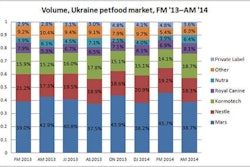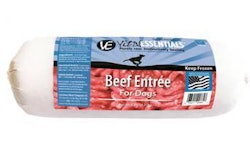This question – “But it’s just marketing, isn’t it?” – is what you sometimes hear when you have a chat with people from the petfood industry, the more so when those who represent the “scientific conscience” are around. However, if the questions is, “Is petfood about marketing or nutrition?” the clear answer must be: both!
It might be more intriguing to ask, “Is marketing about nutrition as far as petfood is concerned?” I think that the only possible answer to that question is: certainly not always!
In very mature markets, marketers have to struggle to have their product and brand stand out, to give it a reason to be bought or, rather, a reason for being. Old truths such as quality and price have an eroding value. People want more, other, without precisely knowing what this should be.
In total desperation, these marketers therefore become creative beyond belief. Once superpremium got a foothold in the European market – and thus saw a plethora of suppliers of products with a superpremium positioning* – people became inventive and brought out hyper premium and even ultra premium ranges of product. Was the food (or the nutrition) essentially different compared to the superpremium products then on the market? No, they were not! But the intention was to be perceived as being different, thus implying superiority.
*Note: After the launch of Eukanuba Premium for dogs in Spain with 30% protein and 20% fat, the Spanish definition for superpremium became 30/20!
Another example is grain-free. There seems to be a hot debate in the scientific world about the use of cereals in dog and cat food, whereas if taken from a nutritional point of view, grain-free products are as good as products containing cereals. But grain-free is positioned as being closer to the animals’ “original” diet; this perceived superiority or pseudo-authenticity can demand a higher price – not only because animal proteins are mostly more expensive than vegetable ones.
Probably 10 years ago, we saw so-called holistic petfood coming to market, a trend that has gradually become mainstream. The real boom seems to have passed already. But what is it, holistic? I recently asked manufacturers of holistic petfood at Interzoo. And I got an avalanche of different answers.
Philosophically speaking, (w)holism is defined (Concise Oxford Dictionary) as follows: “The theory that certain wholes are to be regarded as greater than the sum of their parts.” Can this apply to petfood and, if so, how exactly? Are the ingredients reinforcing one another, providing beneficial nutritional synergies? Is it more than complete?
Medically speaking, (w)holism is defined (same dictionary) as: “The treating of the whole person (read pet) including mental and social factors rather than just the symptoms of a disease.” Just with a food? Does this mean that holistic products are curative (= treatment) beyond being “just” food? If this is so, we’re looking at a highly potent claim that craves for further explanation and hopefully scientific substantiation. Or, is that why holistic has not yet been defined as a regulated category by the regulatory bodies?
What to think of “human grade”? Another one of those claims that imply that food containing ingredients of another grade is inferior. But this is questionable. Is there proof that dogs and cats that are fed non-human grade foods have their health jeopardized? And is it ethical to use human grade ingredients for our pets in a world where still one-sixth of its human population is malnourished? And around at least 120 million people are constantly on the brink of starvation.
The humanization of pets, which is at least partly the reason for propagating human grade, runs the risk of leading us all astray: dog and cats are no humans. Of course our industry has an extremely good reason to use the humanization phenomenon: it’s emotion, so it sells! My conviction is that we do not need human grade ingredients for that.
I think it is fair to say that marketers play a huge role in communicating about petfood and its properties and features; they are on the brink of overstepping a line, however, when they imply inferiority of other product offers without proving their own superiority. Particularly when this implication puts the end buyer on the wrong foot and getting scared for no reason. That is when people say, “But that’s just marketing, isn’t it?”
21st Pet Street, home of Change Stranamics
















